-
-
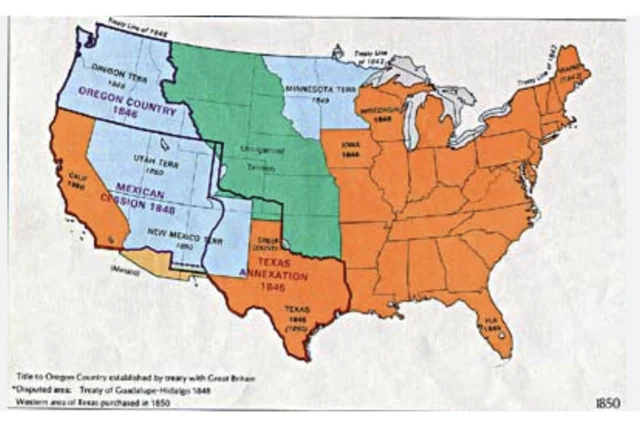 A document raised by David Wilmot, essentially saying that any land aqquired in the Mexcican-American War wouldn't have slavery. In doing this he was essential calling out the Souths bluff in reasoning for fighting the war. The Wilmot Proviso passed the House of Representatives but was defeated in the Senate. This intensified tensions between the North and South as the difference in ideals was clear. (Learned in class)
A document raised by David Wilmot, essentially saying that any land aqquired in the Mexcican-American War wouldn't have slavery. In doing this he was essential calling out the Souths bluff in reasoning for fighting the war. The Wilmot Proviso passed the House of Representatives but was defeated in the Senate. This intensified tensions between the North and South as the difference in ideals was clear. (Learned in class) -
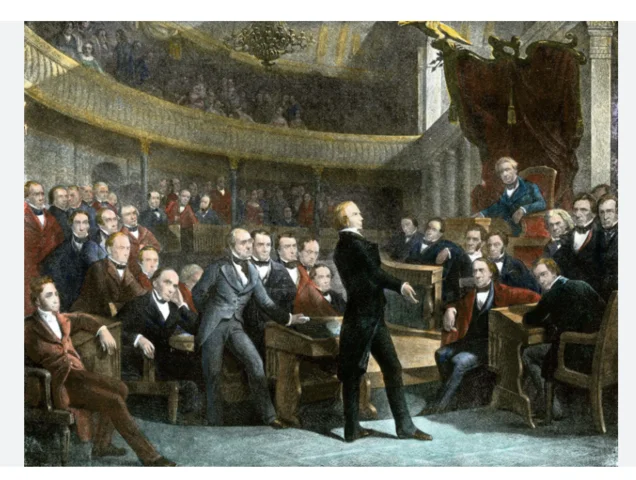 The Compromise of 1850 included admitting California as a free state, establishing the territories of Utah and New Mexico with the option for popular sovereignty on slavery, defining Texas's borders in exchange for debt relief, abolishing the slave trade in Washington D.C., and enacting a stricter Fugitive Slave Act which required citizens to assist in capturing runaway slaves. While initially attempting to ease tensions over slavery, it would result in more problems. (McPherson, 70-75)
The Compromise of 1850 included admitting California as a free state, establishing the territories of Utah and New Mexico with the option for popular sovereignty on slavery, defining Texas's borders in exchange for debt relief, abolishing the slave trade in Washington D.C., and enacting a stricter Fugitive Slave Act which required citizens to assist in capturing runaway slaves. While initially attempting to ease tensions over slavery, it would result in more problems. (McPherson, 70-75) -
 California gets admitted as a free state, so in turn, Southerners got a new, enhanced fugative slave law. This law entailed that all must rat out fugative slaves if your aware of them. This raised the idea of Southerners having more power over Northerners, in the Northerners eyes. After this, there was much push back in the North. Personal liberty laws were passed, which tried to combat the fugative slave act in the North, making its process more difficult. Tensions raised greater. (In class)
California gets admitted as a free state, so in turn, Southerners got a new, enhanced fugative slave law. This law entailed that all must rat out fugative slaves if your aware of them. This raised the idea of Southerners having more power over Northerners, in the Northerners eyes. After this, there was much push back in the North. Personal liberty laws were passed, which tried to combat the fugative slave act in the North, making its process more difficult. Tensions raised greater. (In class) -
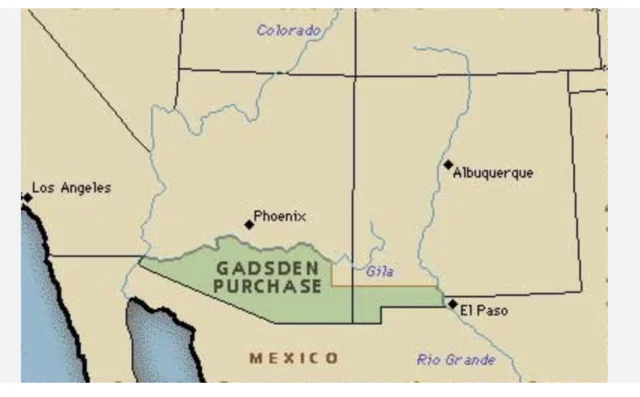 Mexico sells the United States 29,640 square miles of territory south of the Gila River (in what is now southern Arizona and New Mexico) for $10 million. This further inflamed tensions by being seen as a maneuver to expand slave territory in the South, particularly by creating a southern transcontinental railroad route. This would ultimately deepened the divide between the North and South. (Nationalparkservice.gov)
Mexico sells the United States 29,640 square miles of territory south of the Gila River (in what is now southern Arizona and New Mexico) for $10 million. This further inflamed tensions by being seen as a maneuver to expand slave territory in the South, particularly by creating a southern transcontinental railroad route. This would ultimately deepened the divide between the North and South. (Nationalparkservice.gov) -
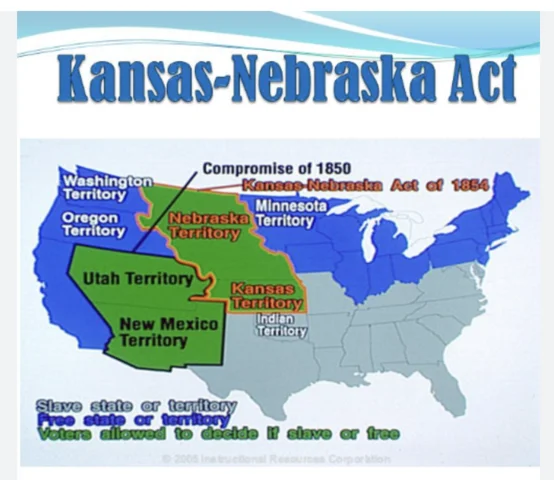 Both Kansas and Nebraska are large territories at this time that were neither free or slave states. Stephen Douglas proposes this act, and raises the idea of popular sovereignty to help decide. In doing this, thousands of people pour into the state, creating a mini-civil war battleground with no governemnt forces involved. 2 constitutions would be submitted to congress, one supporting each side. The votes also didn't add up math wise, so there was no definitive change until the war. (In class)
Both Kansas and Nebraska are large territories at this time that were neither free or slave states. Stephen Douglas proposes this act, and raises the idea of popular sovereignty to help decide. In doing this, thousands of people pour into the state, creating a mini-civil war battleground with no governemnt forces involved. 2 constitutions would be submitted to congress, one supporting each side. The votes also didn't add up math wise, so there was no definitive change until the war. (In class) -
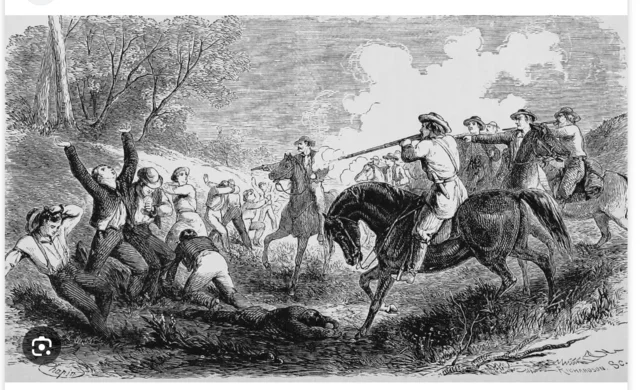 in May 1856, a man named John Brown was angered by the destruction of a newspaper office and other property in Lawrence, Kansas by pro-slavery forces. He decided to retaliate by luring five proslavery men out of their houses, and then slashing and stabbing them with a saber and shooting them in the head. This is very noteworthy because this is largely the event that led to the start of bleeding Kansas. (History.com)
in May 1856, a man named John Brown was angered by the destruction of a newspaper office and other property in Lawrence, Kansas by pro-slavery forces. He decided to retaliate by luring five proslavery men out of their houses, and then slashing and stabbing them with a saber and shooting them in the head. This is very noteworthy because this is largely the event that led to the start of bleeding Kansas. (History.com) -
 This was a book written by George Fitzhugh, first published in 1857. Fitzhugh was a pro-slavery thinker and social theorist who defended the institution of slavery in the southern United States. This differed greatly from other works such as Uncle Tom's Cabin, and greatened tensions even further. (Varon, 288-289).
This was a book written by George Fitzhugh, first published in 1857. Fitzhugh was a pro-slavery thinker and social theorist who defended the institution of slavery in the southern United States. This differed greatly from other works such as Uncle Tom's Cabin, and greatened tensions even further. (Varon, 288-289). -
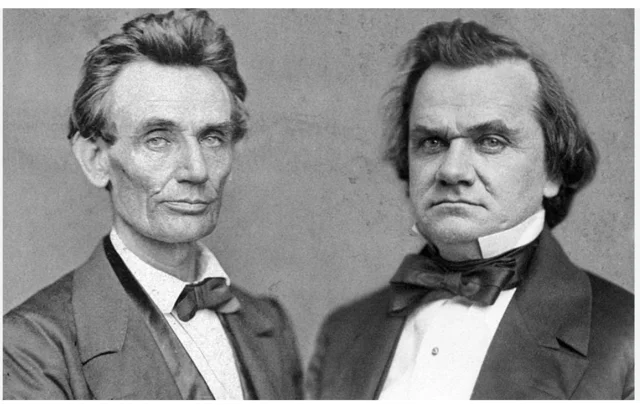 Lincoln and Douglas engaged in seven public debates across the state of Illinois where they debated the most controversial issue at the time, slavery. This is worth noting, because thes debates gave Lincoln some recognition clarified the national debate about slavery, race, and democracy. For Lincoln, the debates were a platform that transformed him into a leading figure in national politics, setting the stage for his presidencial victory in 1860. (battlefields.org)
Lincoln and Douglas engaged in seven public debates across the state of Illinois where they debated the most controversial issue at the time, slavery. This is worth noting, because thes debates gave Lincoln some recognition clarified the national debate about slavery, race, and democracy. For Lincoln, the debates were a platform that transformed him into a leading figure in national politics, setting the stage for his presidencial victory in 1860. (battlefields.org) -
 Brown belives God came to him and gave him the mission to end slavery. Brown doesn't see any other way to achieve this but a violent uprising in the South. Brown gathers a small group of 22 men, and marches on Harpers Ferry, a base in Virginia. He gets spotted before entering, and things fall apart quickly leading to his capture. He is put on trial where he is convicted and executed in the span of 6 weeks. This elicits different reactions based on what terriorty you were living in. (In class)
Brown belives God came to him and gave him the mission to end slavery. Brown doesn't see any other way to achieve this but a violent uprising in the South. Brown gathers a small group of 22 men, and marches on Harpers Ferry, a base in Virginia. He gets spotted before entering, and things fall apart quickly leading to his capture. He is put on trial where he is convicted and executed in the span of 6 weeks. This elicits different reactions based on what terriorty you were living in. (In class) -
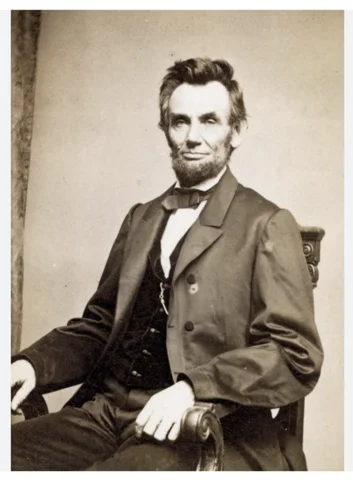 This was a pivotal election for the uneasy state of the US. This was a 4 way election with no clear cut favorite. The Democratic party was split between 2 candiates, which greatly hurt they're cause. Abraham Lincoln would win the election with about 40% of the popular vote, and about 60% of the electoral vote (since he won almost every North state). For many Southerners this is the worst case senario and their last straw. Sucsession starts to become a reality. (learned in class)
This was a pivotal election for the uneasy state of the US. This was a 4 way election with no clear cut favorite. The Democratic party was split between 2 candiates, which greatly hurt they're cause. Abraham Lincoln would win the election with about 40% of the popular vote, and about 60% of the electoral vote (since he won almost every North state). For many Southerners this is the worst case senario and their last straw. Sucsession starts to become a reality. (learned in class)